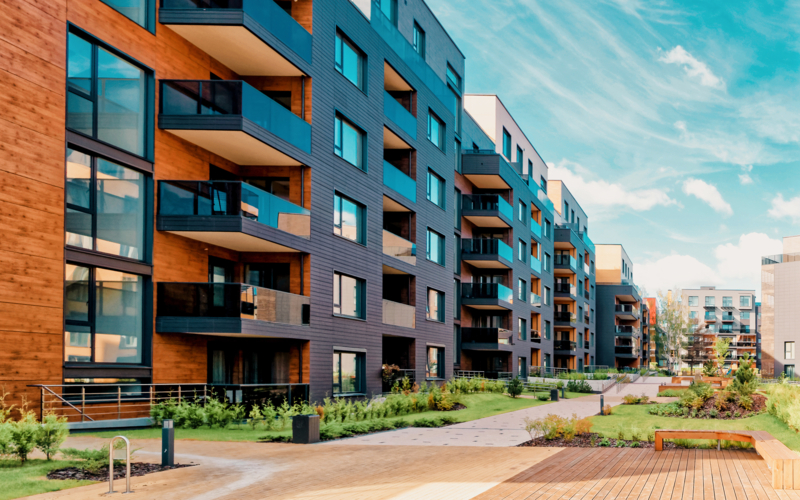Welcome to RUCKUS Networks, part of CommScope's world-leading portfolio of networking solutions. Learn more.
What is Wi-Fi 7? How do I upgrade?
Wireless technology has come a long way since the inception of Wi-Fi®. We have seen significant performance, speed, and reliability advances with each new generation. Wi-Fi 7 is the latest and greatest in the world of wireless connectivity. It offers users faster, more reliable internet speeds and improved connectivity.
If you're wondering how to upgrade to this new technology and enjoy the benefits of Wi-Fi 7, you've come to the right place. This article will explore what Wi-Fi 7 is, its benefits, and how you can upgrade to it.
Key takeaways
- Wi-Fi 7 offers faster speeds, lower latency, and expanded capacity compared to previous Wi-Fi generations.
- The 6GHz band and wider 320MHz channels provide additional spectrum and reduced interference for Wi-Fi 7 networks.
- New technologies like MU-MIMO, OFDMA, and 4K-QAM boost Wi-Fi 7's throughput, efficiency, and peak data rates.
- Wi-Fi 7 supports advanced applications like 8K video streaming, AR/VR, and real-time communication for business.
- Though current Wi-Fi works well for many uses, Wi-Fi 7's improvements make it appealing for future-proofing congested networks.
Why is Wi-Fi 7 so fast? - A brief overview
Wi-Fi 7 is the latest wireless technology standard designed to offer faster speeds, increased capacity, and improved connectivity. It operates in the 6 GHz frequency band, providing more available data transmission channels and reduced interference from other devices. Compared to previous Wi-Fi generations, such as Wi-Fi 6E, Wi-Fi 6, and Wi-Fi 5, Wi-Fi 7 offers significant advancements in wireless technology.
Wi-Fi 7, also known as 802.11be, was developed by the Institute of Electrical and Electronics Engineers (IEEE). It is the successor to Wi-Fi 6 (802.11ax), bringing numerous enhancements to wireless connectivity specifications. Wi-Fi 7 operates in the 6 GHz band, providing wider channels and less congestion than previous generations. In addition, Wi-Fi 7 supports the 2.4 GHz, 5 GHz, and 6 GHz wireless bands, ensuring compatibility with a wide range of devices. This allows for higher transfer speeds, reduced latency, and increased overall network capacity, as seen in the case of Wi-Fi 6E.
This new standard utilizes advanced technologies such as Orthogonal Frequency Division Multiple Access (OFDMA), Multi-User Multiple Input Multiple Output (MU-MIMO), and preamble puncturing to improve throughput, lower latency, and increase overall network efficiency.
What is the 6 GHz band?
6 GHz band is a new frequency range dedicated to Wi-Fi 7. It offers more than double the spectrum available to Wi-Fi 5 and 6, providing additional capacity to support more devices and higher data rates. This expanded frequency range is less crowded, which means fewer collisions and less interference.
Is Wi-Fi 7 faster than Wi-Fi 6?
Wi-Fi 7 delivers faster wireless speeds than its predecessors, with a maximum potential throughput of up to 46 Gbps. WIFI 6 had a maximum speed of 9.6 Gbps. The technology offers faster and more consistent speeds, even in high-density environments where multiple devices are connected simultaneously.
Does Wi-Fi 7 increase capacity and throughput?
Wi-Fi 7 significantly improves capacity, leading to better performance in crowded networks. It supports up to 8x8 MU-MIMO (Multi-User Multiple Input Multiple Output), allowing more simultaneous data streams between the wireless device and the access point.
This feature particularly benefits networks with many connected devices, such as smart home devices, gaming routers, or offices with video conferencing and touchscreen TVs.
Wi-Fi 7 vs. Wi-Fi 6E, Wi-Fi 6, and Wi-Fi 5
Wi-Fi 7 builds upon the advancements made in Wi-Fi 6E, Wi-Fi 6, and Wi-Fi 5. Wi-Fi 6E introduced support for the 6 GHz band. Wi-Fi 6 and Wi-Fi 5 improved performance and capacity. However, Wi-Fi 7 offers significant improvements over these previous generations, with faster speeds, larger capacity, and less interference. As a result, Wi-Fi 7 is set to become the leading Wi-Fi technology for years to come.
What is the speed of Wi-Fi 7?
One of the standout advantages of Wi-Fi 7 is its high-speed transmission capability, offering speeds of up to 46 GBit/s. This significant increase in data rate enables faster downloads, seamless video streaming, and smoother online gaming, providing users with a quicker, more responsive internet experience.
What are the advantages of Wi-Fi 7?
Wi-Fi 7 has many advantages that can transform how we connect and interact with the digital world. Here are some of the key benefits:
- Increased Speed: Wi-Fi 7 offers groundbreaking advancements in speed, allowing for faster data transfer and seamless streaming of ultra-high-definition content.
- Enhanced Capacity: With Wi-Fi 7, networks can support a massive number of connected devices simultaneously. This is particularly beneficial for IoT applications, facilitating smart homes, smart cities, and intelligent automation on a grand scale.
- Reduced Latency: Wi-Fi 7 significantly reduces latency, enabling real-time social gaming and competitive multiplayer gamer experiences with unparalleled responsiveness.
- Improved Reliability: Wi-Fi 7 offers improved reliability, providing stable and consistent connections even in busy indoor spaces with hundreds of mobile devices, smartphones, laptops, etc., and nonstop wireless noise and interference.
- Support for Immersive Experiences: The advanced capabilities of Wi-Fi 7 enable immersive VR applications and augmented reality experiences, opening up new possibilities for entertainment and interaction.
- QAM. Quadrature Amplitude Modulation (QAM) is a method for transmitting and receiving data in radio-frequency waves. The higher the QAM, the more information you can pack in. Wi-Fi 7 supports 4K-QAM, an advanced modulation scheme that can boost peak rates to increase throughput and capacity. Wi-Fi 6 supported 1024-QAM, and Wi-Fi 5 was limited to 256-QAM.
RUCKUS Networks is at the forefront of this latest advancement, preparing partners and customers for the Wi-Fi 7 era with our latest Wi-Fi 7 access points and compatible switches.
What is the advantage of 6 GHz and 320 MHz Channels?
The 6 GHz band and 320 MHz channels bring significant advantages to Wi-Fi technology, particularly with the advent of Wi-Fi 7. Here's how:
- More Spectrum: The 6 GHz band provides additional spectrum for Wi-Fi use. This is crucial as the number of Wi-Fi devices grows, and more spectrum is needed to accommodate them. In some regions like the USA, up to 1,200 MHz of additional spectrum in the 6 GHz band has been approved.
- Wider Channels: The 320 MHz wide channels, which are possible in the 6 GHz band, allow for higher data throughput. This means more data can be transferred at the same time, leading to faster speeds and more efficient use of the spectrum.
- Less Congestion: Wider channels can help reduce congestion, especially in densely populated areas where many devices, smartphones, peripherals, and modems compete for the same spectrum. This leads to improved performance and reliability of Wi-Fi connections.
- Support for Advanced Features: The 6 GHz band and 320 MHz channels support advanced features of Wi-Fi 7, such as Extremely High Throughput. This can lead to speeds exceeding what you could expect with Wi-Fi 6E.
Is Wi-Fi 7 energy efficient?
Wi-Fi 7 devices implement power-saving operations such as Target Wake Time (TWT) and Enhanced Target Wake Time (eTWT), which allow devices to schedule their wake-up times, minimize unnecessary power consumption during idle periods, help conserve battery life, prolong device usage, and reduce energy waste.
This power-saving mechanism is especially beneficial for mobile, smart home, and Internet of Things (IoT) devices.
Is Wi-Fi 7 worth it?
Upgrading to Wi-Fi 7 can bring significant benefits, especially if your current network is struggling to keep up with the demands of modern applications and devices. Here are some factors to consider:
- Performance: Wi-Fi 7 offers substantial speed, capacity, and latency improvements over previous generations. If your current network is slow or congested, upgrading could provide a noticeable boost in performance.
- Future-Proofing: With more devices becoming Wi-Fi 7 compatible, upgrading now could help future-proof your network and help ensure it can support the latest devices and applications.
- IoT and Smart Devices: If you have many IoT or smart devices or plan to add more, Wi-Fi 7's ability to support many devices simultaneously could be a significant advantage.
- Energy Efficiency: Wi-Fi 7's energy-saving features can help extend the battery life of your devices and reduce overall power consumption.
How do I choose a Wi-Fi 7 access point?
To upgrade to Wi-Fi 7, you'll need access points that support the new standard. Several manufacturers, such as RUCKUS, have already released Wi-Fi 7 APs, offering faster speeds, wider channels, and enhanced user experience.
When designing a Wi-Fi 7 Network, consider throughput, channel width, firmware support, compatibility with your existing devices, and the availability of multi-gig LAN ports (2.5 Gbps to 10 Gbps) and multi-gig WAN ports.
It's also worth considering mesh systems, which provide seamless coverage throughout your home, eliminating dead zones and providing a consistent internet connection.
Is Wi-Fi 7 good for businesses?
Wi-Fi 7 brings a host of benefits to businesses across various industries. Here are a few key advantages:
- Dramatically Better Throughput: Wi-Fi 7 offers significantly improved throughput compared to Wi-Fi 6. With wider channels and more significant 6 GHz capacity gains, Wi-Fi 7 can deliver peak rates exceeding 40 Gbps, which is four times the throughput of Wi-Fi 6. This means faster data transfer, smoother streaming, and improved network performance.
- Wireless Link Aggregation with MLO: Multi-link operation (MLO) allows a Wi-Fi 7 access point (AP) and a user device to connect over multiple bands simultaneously. This link aggregation significantly increases throughput, reduces latency, and improves connection reliability, which is crucial for businesses that rely on stable and fast internet connections.
- Interference Management with Preamble Puncturing: Wi-Fi 7 can transmit a "punctured" portion of a channel if legacy users are using a part of that channel spectrum. This feature allows Wi-Fi 7 to support a 320 MHz channel—double that of Wi-Fi 6—without letting interference degrade performance. This is particularly beneficial for businesses operating in crowded wireless environments.
- Support for Low Latency Applications: Wi-Fi 7 technologies support time-sensitive networking (TSN) to provide the deterministic latency needed for advanced next-gen applications like AR and VR. This is particularly beneficial for businesses in industries like gaming, entertainment, healthcare, hospitality, and design, where these applications are commonly used.
What industries need Wi-Fi 7?
- Hotels (Hospitality): Wi-Fi 7 technology can provide guests with seamless, high-speed connectivity, enhancing their stay experience and enabling services like digital check-in and room automation.
- Education: With Wi-Fi 7, schools and universities can offer digital-first learning experiences, supporting online classes, digital resources, and collaborative tools with reliable, low-latency connectivity.
- Warehousing: Wi-Fi 7 can enable efficient inventory management and real-time warehouse tracking, improving operational efficiency and reducing errors.
- Multiple Dwelling Unit (MDU): In MDUs, Wi-Fi 7 can provide residents with fast, reliable internet access, supporting multiple devices and smart home technologies without compromising speed or performance throughout the entire home.
- Federal Government: For federal government agencies, Wi-Fi 7 can provide secure, reliable connectivity for critical operations, supporting remote work, data sharing, and digital services.
- Arenas: Wi-Fi 7 can provide spectators with greater bandwidth and high-speed internet access, enhancing their experience with live streaming, digital ticketing, and interactive apps.
- Convention Centers: With Wi-Fi 7, convention centers can offer reliable, high-speed connectivity to exhibitors and attendees, supporting digital presentations, live streaming, and online networking.
- Stadiums: In stadiums, Wi-Fi 7 can enable real-time streaming and interactive fan experiences, enhancing spectator engagement and satisfaction.
Should I upgrade to Wi-Fi 7?
Now that we've covered the features, advantages, and applications of Wi-Fi 7, you may wonder if upgrading your router and access points to this new standard is right for you. While Wi-Fi 7 offers significant enhancements, it's essential to consider your needs, capabilities, and device compatibility before upgrading.
Conclusion
In summary, Wi-Fi 7 represents a significant advancement in wireless technology that will bring faster speeds, expanded capacity, lower latency, and enhanced user experiences. While current Wi-Fi standards still perform well for many applications, the improvements Wi-Fi 7 enables make it appealing for those wanting to future-proof their networks.
Upgrading to Wi-Fi 7 is recommended for users struggling with congested networks, those planning to deploy bandwidth-intensive applications like 8K video streaming or AR/VR, and businesses needing ultra-low latency for real-time applications. As more Wi-Fi 7 devices become available, users will be able to fully leverage the benefits of this new standard.
With its ability to efficiently support a massive number of devices simultaneously and minimize interference, Wi-Fi 7 has the potential to transform connectivity in homes, enterprises, public spaces, and industrial environments. While it may take some time for the new standard to be widely adopted, Wi-Fi 7 is poised to become the benchmark for wireless performance, speed and reliability in the years ahead.
FAQ
What do I need to consider when upgrading to Wi-Fi 7?
When upgrading to Wi-Fi 7, you should consider the availability of Wi-Fi 7 routers and compatible devices. It may be necessary to purchase a new router that supports Wi-Fi 7 and upgrade your devices to ones that can take full advantage of the improved technology.
How does Wi-Fi 7 handle interference?
Wi-Fi 7 introduces a feature called Preamble Puncturing, which allows a Wi-Fi 7 AP to transmit a "punctured" portion of a channel if legacy users use a portion of that channel spectrum. This feature helps Wi-Fi 7 support 320 MHz channels without letting interference degrade performance.
What is MLO in Wi-Fi 7?
MLO stands for Multi-Link Operation. It's a feature in Wi-Fi 7 that uses multiple bands to connect the access point and user device simultaneously. This aggregation of discrete links significantly increases throughput, reduces latency, and improves connection reliability.
© 2023 CommScope, Inc. All rights reserved. CommScope and the CommScope logo are registered trademarks of CommScope and/or its affiliates in the U.S. and other countries. For additional trademark information see https://www.commscope.com/trademarks. Wi-Fi, Wi-Fi 5, Wi-Fi 6, Wi-Fi 6E and Wi-Fi 7 are trademarks of the Wi-Fi Alliance. All product names, trademarks and registered trademarks are property of their respective owners.













